Paul Bishop's Blog, page 6
October 13, 2019
THE CARTER COLLECTION VIDEO TRIBUTE
 THE CARTER COLLECTIONVIDEO TRIBUTEEarlier this year I had the honor and obligation of curating an amazing collection of men's adventure paperback original series books. i wrote a blog post detailing the story, and now my friend and pop culture maven extraordinaire, Jules Burt, has created a video tribute capturing the story...Below is Jules' comments introducing the video...
THE CARTER COLLECTIONVIDEO TRIBUTEEarlier this year I had the honor and obligation of curating an amazing collection of men's adventure paperback original series books. i wrote a blog post detailing the story, and now my friend and pop culture maven extraordinaire, Jules Burt, has created a video tribute capturing the story...Below is Jules' comments introducing the video... THE CARTER COLLECTIONTHE GREATEST VINTAGE PAPERBACKFIND OF 2019In this video I recall the story of one of the most exciting and fantastic vintage paperback finds of 2019—The Carter Collection.
THE CARTER COLLECTIONTHE GREATEST VINTAGE PAPERBACKFIND OF 2019In this video I recall the story of one of the most exciting and fantastic vintage paperback finds of 2019—The Carter Collection.Through The Men's Adventure Paperback group on Facebook, this collection made it's way into the hands of collector and author Paul Bishop. Paul distributed the collection to collectors around the world, as well as to charitable organisations.
It's an amazing story and one I'm very grateful to share with you here.
Published on October 13, 2019 21:44
NORTHWESTERNS—THE SCARLET RIDERS
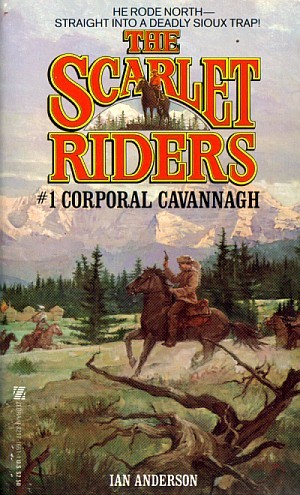 NORTHWESTERNSTHE SCARLET RIDERSUnmatched courage—Bringing justice to the new lands of the lawless Canadian West was a tough assignment, so the Mounties prepared themselves for a rough battle. New to the frontier the brave and idealistic riders of the Scarlet Serge were destined for a long tour of death—until they were joined by a bold Indian fighter named Cavannagh. Together, they would create the grand legend of the Scarlet Riders...
NORTHWESTERNSTHE SCARLET RIDERSUnmatched courage—Bringing justice to the new lands of the lawless Canadian West was a tough assignment, so the Mounties prepared themselves for a rough battle. New to the frontier the brave and idealistic riders of the Scarlet Serge were destined for a long tour of death—until they were joined by a bold Indian fighter named Cavannagh. Together, they would create the grand legend of the Scarlet Riders...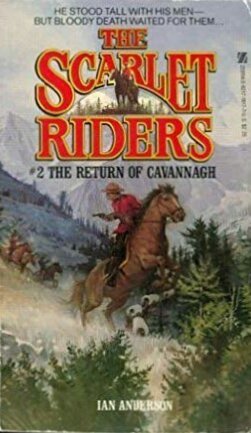 Perusing a used bookstore recently in the heart of Kansas, four titles in the seven book paperback original series, The Scarlet Riders, somehow leapt out of the Western section and snagged my interest. I was looking for something different and these seemed intriguing—Mounties chasing outlaws across the vast Northwest Territories and ferocious wastelands of the Yukon.
Perusing a used bookstore recently in the heart of Kansas, four titles in the seven book paperback original series, The Scarlet Riders, somehow leapt out of the Western section and snagged my interest. I was looking for something different and these seemed intriguing—Mounties chasing outlaws across the vast Northwest Territories and ferocious wastelands of the Yukon.The Mounties are reputed to always get their man, and in this case, they definitely got me. I read the first book in the series later the same day and was hooked. This was good stuff. What I had expected to be a Canadian version of the adult Westerns such as Longarm and Rough Justice, was so much more—this was simply an excellent high adventure take on the traditional Western.
 I was familiar with the term Northwesterns as applied to this genre—quasi Westerns taking place in the snow north of the border into Canada—but beyond a couple if Jack London tales it was uncharted territory for me.
I was familiar with the term Northwesterns as applied to this genre—quasi Westerns taking place in the snow north of the border into Canada—but beyond a couple if Jack London tales it was uncharted territory for me.At its heart, a Northwestern is a traditional Western transplanted from the prairie to the frozen tundra of the Canadian frontier or the big empty of Alaska. The trappings of a Northwestern (snow, sled dogs, scarlet tunics, etc.) may be somewhat different, but the tropes are virtually identical to those of the Western genre.
In the case of Northwesterns, The Hudson Bay Company fulfills the role played in Westerns by evil cattle barons or railroad tyrants. This became so entrenched in the Northwestern genre that the actual Hudson Bay Company became despised.
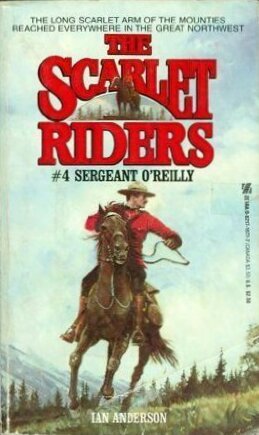 In 1921, the HBC successful sued the Famous Players-Lasky Corporation as the responsible party for the villainous portrayal of the Hudson Bay Company in the remake of the film The Call of the North—in which the Hudson Bay Company is shown executing convicts by forcing them into the wilderness without equipment or supplies.
In 1921, the HBC successful sued the Famous Players-Lasky Corporation as the responsible party for the villainous portrayal of the Hudson Bay Company in the remake of the film The Call of the North—in which the Hudson Bay Company is shown executing convicts by forcing them into the wilderness without equipment or supplies.Interestingly, in Northwesterns, French Canadians—often considered inferior, ignorant, and villainous by other Canadians—take on the role played by Hispanics in traditional Westerns. French Canadian women fared little better—being portrayed as the equivalent of the stereotypical exotic and tempestuous female Hispanic spitfire.
These femme fatales were often intent on luring the upright Mountie out of his scarlet tunic and boots in order to have their wicked way with them, thus distracting the Mountie from his duty. Mounties, however, are known to be very big on doing their duty and seldom succumb.
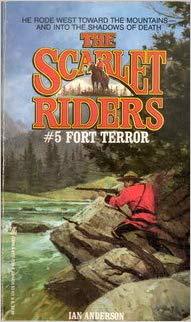 An article on Northwesterns in Wikipedia states, The nature of fictional Mounties can vary depending on the nationality of the author. Mounties as written by British authors are often younger members of upper class British families serving the British Empire in the colonies. American-authored Mounties are often little different from US Marshalls and project the values of Westerns in that they place their individual sense of justice and conscience above their duty to the law.
An article on Northwesterns in Wikipedia states, The nature of fictional Mounties can vary depending on the nationality of the author. Mounties as written by British authors are often younger members of upper class British families serving the British Empire in the colonies. American-authored Mounties are often little different from US Marshalls and project the values of Westerns in that they place their individual sense of justice and conscience above their duty to the law. Canadian-authored Mounties represent, and are self-abnegating champions of, the Canadian establishment and its laws. Further, their authority does not come from either their social class or physical abilities; such a Mountie upholds the law by moral rather than physical force. A common story outline for Northerns involving Mounties is a pursuit, confrontation and capture: the Mountie's pursuit of a fugitive takes place across the Canadian wilderness and may be resolved non-violently.
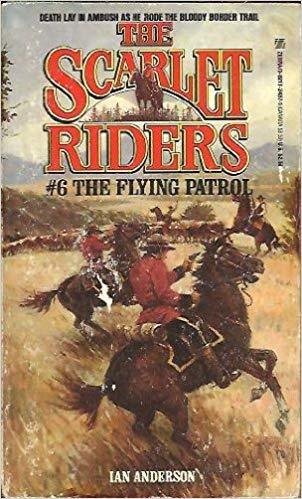 Returning to The Scarlet Riders books, many series published during the same period were either written by an author using a pseudonym, or written by a group of authors under a house name owned by the publishing company on a work for hire basis (a one time payment with no royalties). However, some quick checking revealed The Scarlet Riders series author, Ian Anderson, not only to be a real person, but also a real Mountie.
Returning to The Scarlet Riders books, many series published during the same period were either written by an author using a pseudonym, or written by a group of authors under a house name owned by the publishing company on a work for hire basis (a one time payment with no royalties). However, some quick checking revealed The Scarlet Riders series author, Ian Anderson, not only to be a real person, but also a real Mountie.Born in Australia in 1930, Ian Anderson decided by age six that he wanted to be a red-coated Canadian Mountie when he grew up. Besides loving the wilderness and sports, Ian was an avid reader driving him to add a becoming a writer to his youthful aspirations.
Growing up during the height of the Northwestern movie craze, Ian saw and was influenced them all—Call of the Wild, O’Malley of the Mounted, King of the Royal Mounted, Red Blood of Courage, North of the Yukon, and Cecil B DeMille’s North West Mounted Police.
Ian began his quest of becoming a Canadian scarlet rider by first serving with the South Australian Mounted Police, where he learned to ride a horse, fight bush fires, and do battle with sword and bayonet.
 In 1948, age 18, he journeyed to Canada. A year later, he achieved his goal of joining the Royal Canadian Mounted Police, donning the world-famous red serge jacket and broad-brimmed Stetson for the first time.
In 1948, age 18, he journeyed to Canada. A year later, he achieved his goal of joining the Royal Canadian Mounted Police, donning the world-famous red serge jacket and broad-brimmed Stetson for the first time.In 1965, he left the RCMP to serve as a sub-inspector in the Royal Papua-New Guinea Constabulary, including a stint at the Bomana Police College in Port Moresby.
Eventually, Ian and his wife Mary returned to Australia. Settling into life in Melbourne, he began to write The Scarlet Riders series, which was first published in Canada before being picked up by Zebra Books for American publication.
 THE SCARLET RIDERS #1
THE SCARLET RIDERS #1CORPORAL CAVANNAGHThe worst kind of scandal: a brave young cavalry Lieutenant and another officer’s wife. After resigning his commission in the U.S. Seventh Cavalry in disgrace, John Tarlton Cavannagh rides north, where he joins the new North-West Mounted Police. But he must prove himself. “You’ll nae be wearin’ the Queen’s scarlet yet, Mister Cavannagh,” Sgt. MacGregor growled. “That’s a privilege ye have tae earn!”
THE SCARLET RIDERS #2THE RETURN OF CAVANNAGHUncharted territory—A power hungry schemer in the U.S. Hired an army of blood thirsty outlaws to massacre the Mounties at Fort Walsh. That was his first step in a cunning conspiracy to grab the huge Northwest Territory from Canada. It was a perfect plan that took everything into account—except a sharp-shooting man named Cavannagh.
THE SCARLET RIDERS #3BEYOND THE STONE HEAPSFresh from slaughtering Custer and his men at Little Big Horn the Sioux cross into Canada. But Cavannagh is hard on their trail seeking the renegade chief who has launched a vicious mission of vengeance. With death on all sides, Cavannagh boldly rides into the Sioux camp. Only he can stop a raging war that would end just one way, a Mountie massacre!
THE SCARLET RIDERS #6THE FLYING PATROLAll along the Canadian border, Iron Fist Taggert and his crew were slaughtering people and seizing their homesteads. Hugh O'Reilly, a new Scarlet Rider recruit, refused to let them rob hardworking people of their lands--and swore to stop them or go down fighting to preserve the Scarlet Riders' legends.
THE SCARLET RIDERS #7DEAD OR ALIVETrail To Vengeance—A daring Montana bank robbery had left two law abiding citizens lying dead in the dust and the owlhoots responsible galloping north to Canada and safety. But Deputy U.s. Marshal William James Edson wasn't about to let a trio of outlaws get away with murder just by slipping over into another country. Edson believed in justice pure and simple. And he'd ride through the flaming gates of Hell itself to make sure the murdering Jaspers stretched hemp for their crime—even if he had to ride in alone!
Trail To Glory—Nobody felt justice's pull more than Corporal Colin MacGregor of the Northwest Mounted Police. Joining forces with the determined U.S. Marshal, the Mountie took off in pursuit of the dangerous desperados across the vast Canadian wilderness. But six thousand renegade Sioux stood in the way of lawmen and outlaws alike. And faced with the blood-hungry Redskins, desperate killers, and the savage, fast approaching Canadian winter, it looked like nothing short of death would be MacGregor's price for preserving the glory of The Scarlet Riders.
Published on October 13, 2019 20:42
NORTHWESTERNS—BROTHERS IN BLOOD
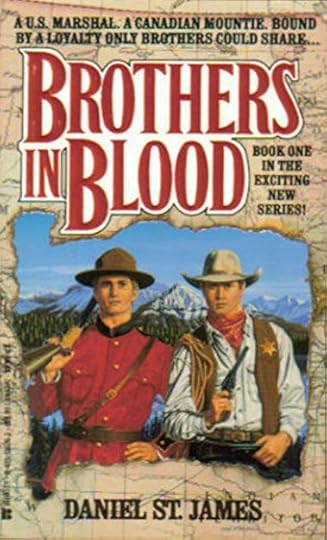 NORTHWESTERNSBROTHERS IN BLOODDANIEL ST. JAMESAfter reading the seven books in Ian Anderson's paperback original series, The Scarlet Riders, I was hooked on Northwesterns and went down the rabbit hole in my search for more books in the genre.
NORTHWESTERNSBROTHERS IN BLOODDANIEL ST. JAMESAfter reading the seven books in Ian Anderson's paperback original series, The Scarlet Riders, I was hooked on Northwesterns and went down the rabbit hole in my search for more books in the genre.Brothers In Blood is a three book series featuring two law enforcement brothers operating on either side of the U.S. Canadian border. This set up is familiar to anyone who has seen the relatively obscure Western TV series Bordertown, or in many ways to the fondly remembered Due South.
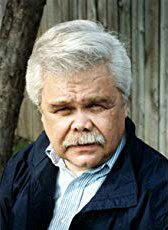 I had a feeling series author of record, David St. James, was a pseudonym. I did some digging wanting to find out if one author or several wrote the books. What I found was a pleasant surprise. While interviewing revered mystery and Western writer Ed Gorman for his Western Fiction blog, my friend Steve Myall outed Gorman as the man behind the David St. James pseudonym. Gorman was a bit surprised by Steve having uncover his connection to Brothers In Blood, but he shared the series ended after three books when it failed to find a significant audience.
I had a feeling series author of record, David St. James, was a pseudonym. I did some digging wanting to find out if one author or several wrote the books. What I found was a pleasant surprise. While interviewing revered mystery and Western writer Ed Gorman for his Western Fiction blog, my friend Steve Myall outed Gorman as the man behind the David St. James pseudonym. Gorman was a bit surprised by Steve having uncover his connection to Brothers In Blood, but he shared the series ended after three books when it failed to find a significant audience.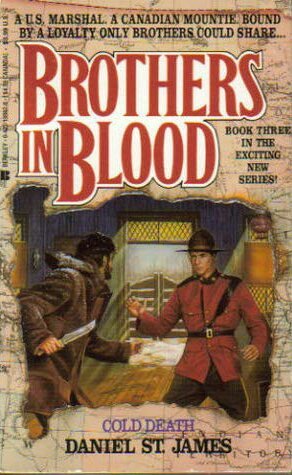 This is a shame, because Gorman's work is always worth reading and Brothers In Blood is a fun concept. I enjoyed the series, but also understand the vagaries of publishing. The series, however, is worth tracking down for both genre fans and Gorman completists...
This is a shame, because Gorman's work is always worth reading and Brothers In Blood is a fun concept. I enjoyed the series, but also understand the vagaries of publishing. The series, however, is worth tracking down for both genre fans and Gorman completists...BROTHERS IN BLOOD #1
First in the new western series of two brothers fighting the same battle for justice on opposite sides of the border. Frank Adams is a U.S. Marshal, and his younger brother, David, is a Canadian Mountie. During the whiskey-running, cattle-rustling days of the 1800's, they put their lives on the line to uphold justice. When their father is murdered, U.S. Marshal Frank Adams and his Canadian Mountie brother David set out to catch the killers, only to be drawn into a dangerous trap
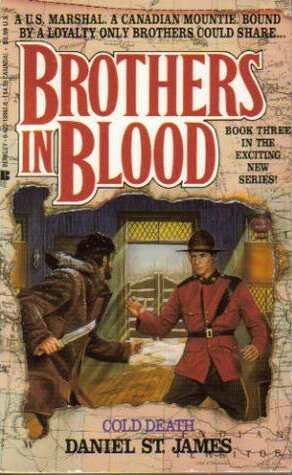 BROTHERS IN BLOOD #2
BROTHERS IN BLOOD #2TRACKDOWN
David and Frank Adams--a Canadian Mountie and a U.S. Marshall, respectively--team up to uncover a killer in the town of Sunset, Canada, when four Mounties are killed in a matter of months.
BROTHERS IN BLOOD #3
COLD DEATH
Frank and David Adams investigate the suspicious death of Canadian Mountie Karl Swenson, an old friend who appears to have committed suicide by setting himself on fire.
Published on October 13, 2019 09:11
October 8, 2019
MORE MOUNTIES IN THE PULPS
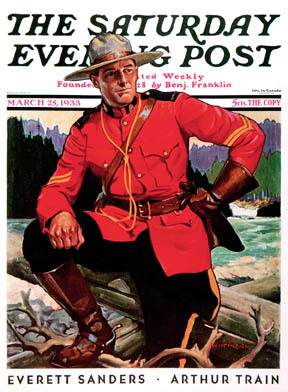 MORE MOUNTIESIN THE PULPS
Mush Or Die
MORE MOUNTIESIN THE PULPS
Mush Or Die
 While North-West Romance was the vanguard of the Northwestern genre, many other pulps, including leading titles such as Argosy, Adventure, and Short-Stories, published exciting yarns of mounties and the Yukon.
While North-West Romance was the vanguard of the Northwestern genre, many other pulps, including leading titles such as Argosy, Adventure, and Short-Stories, published exciting yarns of mounties and the Yukon.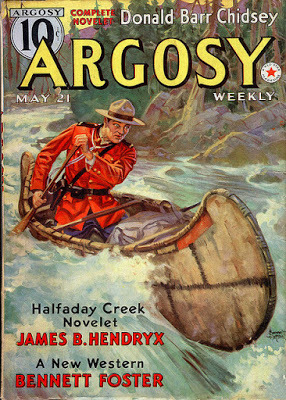 They even occasionally featured a scarlet-coated mountie on their covers. The stories in several pulps such as Complete Northwest Novel, Complete Northwest, and Real Northwest Adventures, were exclusively Northwesterns, but none had the longevity or achieved the popularity of North-West Romance.
They even occasionally featured a scarlet-coated mountie on their covers. The stories in several pulps such as Complete Northwest Novel, Complete Northwest, and Real Northwest Adventures, were exclusively Northwesterns, but none had the longevity or achieved the popularity of North-West Romance.
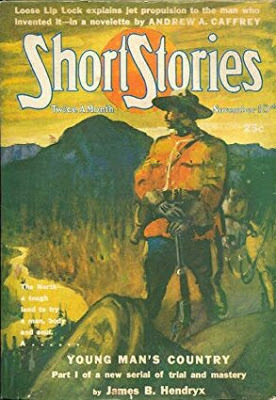 James B. Hendryx is perhaps best remembered for his Halfaday Creek stories featuring Black John—a rugged, roguish, grizzled man with a frontiersman’s sense of sudden justice and gentle humor. Hendryx also created Corporal Cameron Downey of the RCMP, who appeared in a series of tales in Short Stories.
James B. Hendryx is perhaps best remembered for his Halfaday Creek stories featuring Black John—a rugged, roguish, grizzled man with a frontiersman’s sense of sudden justice and gentle humor. Hendryx also created Corporal Cameron Downey of the RCMP, who appeared in a series of tales in Short Stories. 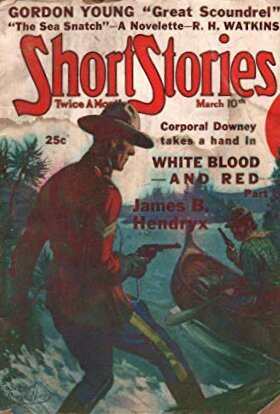
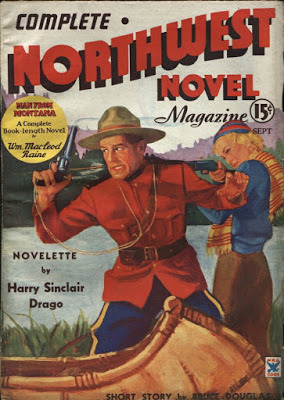 Argosy and Adventure were among the top paying pulp markets. Their focus was High Adventure, a genre broad enough to make room for Northwesterns.
Argosy and Adventure were among the top paying pulp markets. Their focus was High Adventure, a genre broad enough to make room for Northwesterns. 
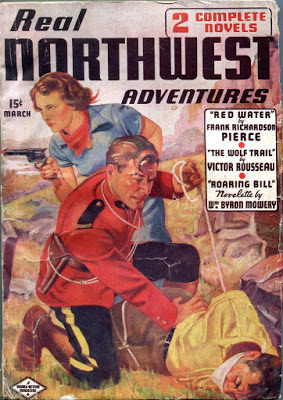 Argosy favored stories about a mountie named no-shirt McGee in such tales as Red Coat, White Feather and When the River Ran White. Adventure could boast stories from pulp regular Gorges Surdez like Man At Arms with its hero, the toughest looking mountie ever illustrated on the cover.
Argosy favored stories about a mountie named no-shirt McGee in such tales as Red Coat, White Feather and When the River Ran White. Adventure could boast stories from pulp regular Gorges Surdez like Man At Arms with its hero, the toughest looking mountie ever illustrated on the cover.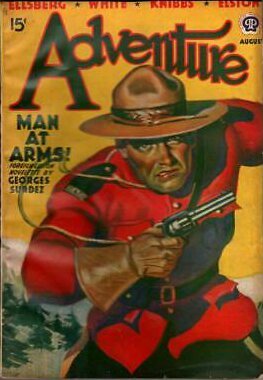
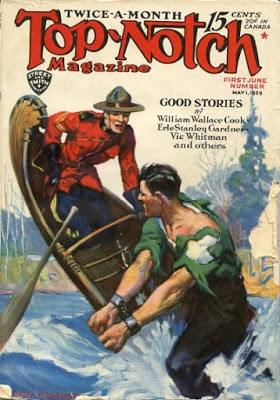 Top-Notch was a middle tier pulp along with Thrilling Adventures, but both regularly featured Northwesterns in their story lineups and on their covers.
Top-Notch was a middle tier pulp along with Thrilling Adventures, but both regularly featured Northwesterns in their story lineups and on their covers.
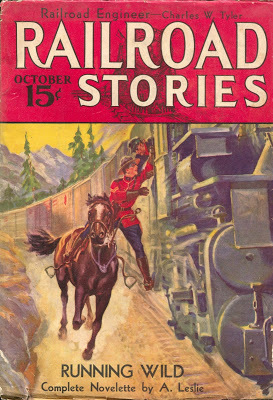 Pulps such a Railroad Stories and Popular Radio, which would appear to have a different genre agenda glance appear occasionally featured a Northwestern story on their cover. Even prestigious slicks like The Saturday Evening Post and the clean cut youth oriented American Boy got in on the act.
Pulps such a Railroad Stories and Popular Radio, which would appear to have a different genre agenda glance appear occasionally featured a Northwestern story on their cover. Even prestigious slicks like The Saturday Evening Post and the clean cut youth oriented American Boy got in on the act.
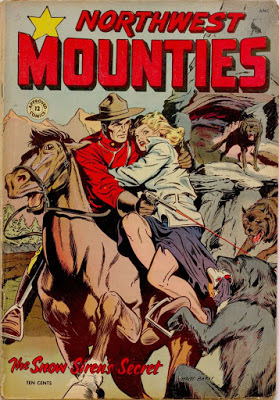 Comics were not going to be left out either. Along with Dell publishing's mainstream comics Zane Grey's King Of The Royal Mounted and Sergeant Preston of the Yukon (both featured in previous posts), other smaller comic companies produced cut rate tales labeled with generic titles–such as Northwest Mounties–and with heroes in scarlet tunics emblazoned on their covers to pull readers in.
Comics were not going to be left out either. Along with Dell publishing's mainstream comics Zane Grey's King Of The Royal Mounted and Sergeant Preston of the Yukon (both featured in previous posts), other smaller comic companies produced cut rate tales labeled with generic titles–such as Northwest Mounties–and with heroes in scarlet tunics emblazoned on their covers to pull readers in.
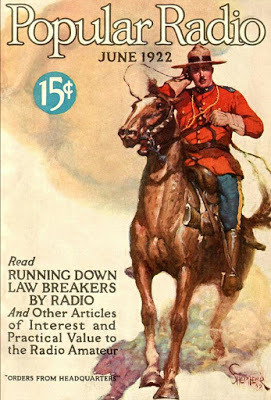 Beyond the pulps and comics, mounties also appeared prominently in books and movies, which deserve posts of their own.
Beyond the pulps and comics, mounties also appeared prominently in books and movies, which deserve posts of their own.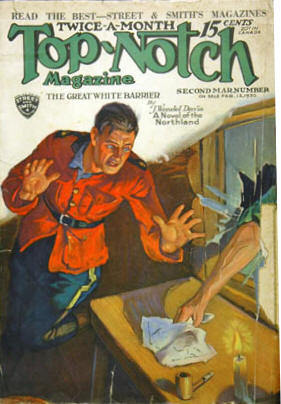


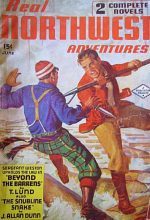
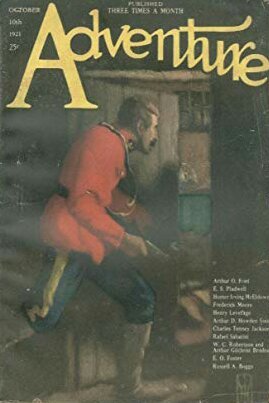

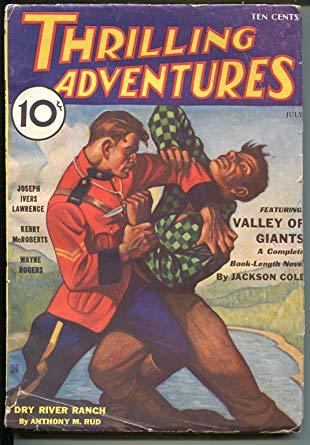
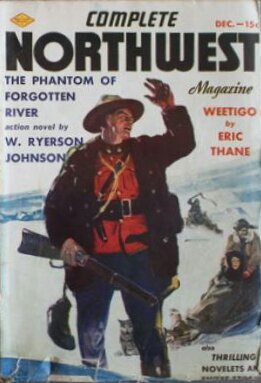




Published on October 08, 2019 22:23
October 7, 2019
MOUNTIES IN THE PULPS—NORTH WEST ROMANCES
 MOUNTIES IN THE PULPSNORTH WEST ROMANCESI'm currently having a canoe full of fun immersing myself in the Northwestern genre, which for no discernible reason I have never explored beyond a couple of Jack London novels.
MOUNTIES IN THE PULPSNORTH WEST ROMANCESI'm currently having a canoe full of fun immersing myself in the Northwestern genre, which for no discernible reason I have never explored beyond a couple of Jack London novels.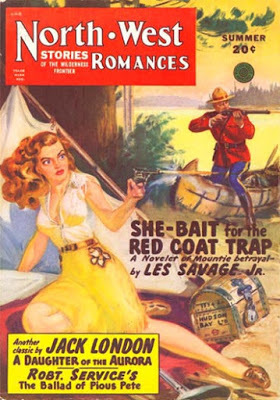 Northwestern yarns most often feature courageous, scarlet-coated, Canadian Mounties pursing desperate claim jumpers, double dealing gold prospectors, fur pirates, beautiful independent women—both seductive Jezabels and innocent ingénues—wild sled dogs and wilder wolves across the savage Yukon.
Northwestern yarns most often feature courageous, scarlet-coated, Canadian Mounties pursing desperate claim jumpers, double dealing gold prospectors, fur pirates, beautiful independent women—both seductive Jezabels and innocent ingénues—wild sled dogs and wilder wolves across the savage Yukon.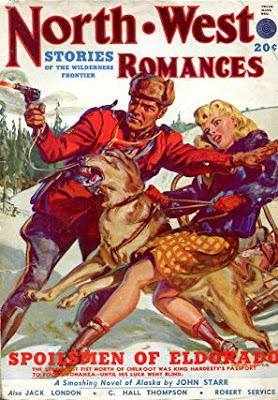 At its heart, a Northwestern is a traditional Western transplanted from the prairie to the frozen tundra of the Canadian frontier or the big empty of Alaska.
At its heart, a Northwestern is a traditional Western transplanted from the prairie to the frozen tundra of the Canadian frontier or the big empty of Alaska. 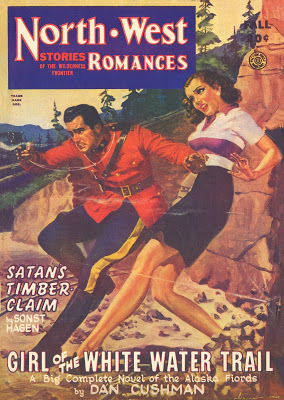 The trappings of a Northwestern (snow, sled dogs, scarlet tunics, etc.) may be somewhat different, but the tropes are virtually identical to those of the Western genre.
The trappings of a Northwestern (snow, sled dogs, scarlet tunics, etc.) may be somewhat different, but the tropes are virtually identical to those of the Western genre.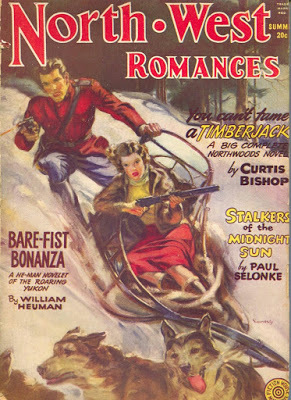 The pulp magazine North-West Stories first appeared on the newsstands in May, 1925. Its action filled, brightly colored covers, dominated by the scarlet tunics of the Canadian mounties, offered a new and intriguing concept to jade pulp readers. An instant hit, North-West Stories became one of the most popular and longest running of all the pulp magazines.
The pulp magazine North-West Stories first appeared on the newsstands in May, 1925. Its action filled, brightly colored covers, dominated by the scarlet tunics of the Canadian mounties, offered a new and intriguing concept to jade pulp readers. An instant hit, North-West Stories became one of the most popular and longest running of all the pulp magazines.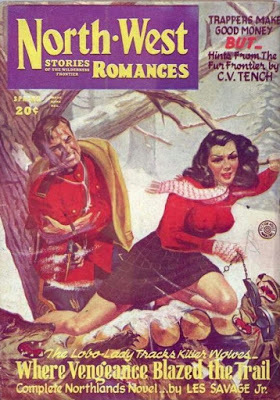 In 1937, Fiction House, the publisher of North-West Stories, recognize the magazine had established a loyal female readership, which surprisingly had grown to almost half of their audience.
In 1937, Fiction House, the publisher of North-West Stories, recognize the magazine had established a loyal female readership, which surprisingly had grown to almost half of their audience. 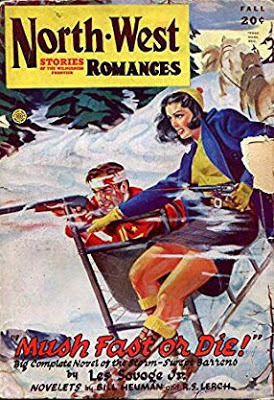 Seeing an opportunity, Fiction House changed the magazine’s title to North-West Romances, began adding more female writers, and introducing strong female characters into the storylines.
Seeing an opportunity, Fiction House changed the magazine’s title to North-West Romances, began adding more female writers, and introducing strong female characters into the storylines.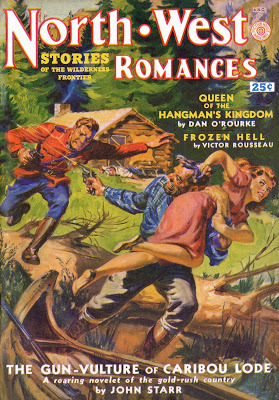 Sales grew exponentially, leading Fiction House to break the tradition of covers showing a beautiful woman in jeopardy being rescued by the square-jawed hero.
Sales grew exponentially, leading Fiction House to break the tradition of covers showing a beautiful woman in jeopardy being rescued by the square-jawed hero.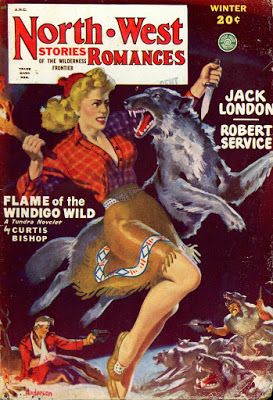 Instead, Fiction House house began publishing covers in which the beautiful girl was bravely and determinedly fighting side by side with the squared-jawed hero.
Instead, Fiction House house began publishing covers in which the beautiful girl was bravely and determinedly fighting side by side with the squared-jawed hero.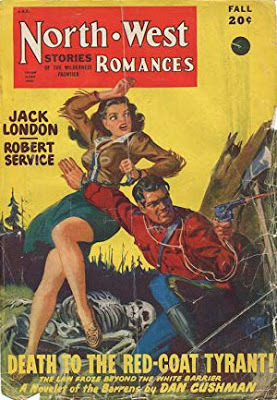 As if this wasn't bold enough, North-West Romances dared to publish covers in which the square-jawed hero is in desperate jeopardy and the beautiful, once helpless, but now confident and competent female is racing to the rescue—often on horseback or driving a team of huskies—gun, knife, or bludgeon in hand.
As if this wasn't bold enough, North-West Romances dared to publish covers in which the square-jawed hero is in desperate jeopardy and the beautiful, once helpless, but now confident and competent female is racing to the rescue—often on horseback or driving a team of huskies—gun, knife, or bludgeon in hand.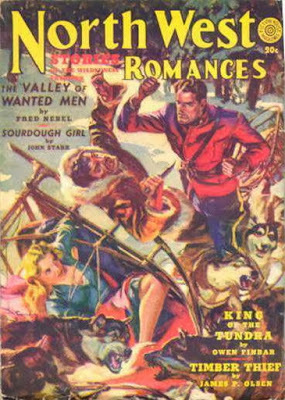 In my next post I'll look closer at some of the other pulps attempting to capitalize on the popularity of the Northwestern, but North-West Romances was unquestionably the genre's vanguard.
In my next post I'll look closer at some of the other pulps attempting to capitalize on the popularity of the Northwestern, but North-West Romances was unquestionably the genre's vanguard.









Published on October 07, 2019 20:41
October 6, 2019
SERGEANT PRESTON OF THE YUKON
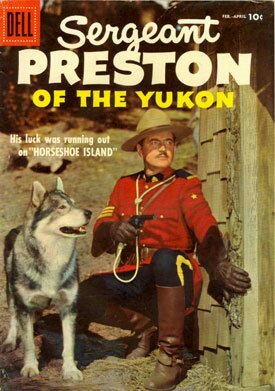 SERGEANT PRESTON OF THE YUKON
Sergeant Preston of the Northwest Mounted Police, with Yukon King the swiftest and strongest lead dog breaking the trail, set out in the relentless pursuit of lawbreakers in the wild days of the Yukon.
SERGEANT PRESTON OF THE YUKON
Sergeant Preston of the Northwest Mounted Police, with Yukon King the swiftest and strongest lead dog breaking the trail, set out in the relentless pursuit of lawbreakers in the wild days of the Yukon.
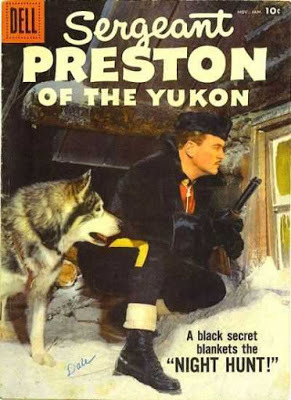 Sergeant Preston of the Yukon is another prime example of the Northwestern genre. The show starred Richard Simmons as the redcoated Preston of the Royal Northwest Mounted Police. The upright Preston–along with his dog Yukon King (in reality an Alaskan Malamute doing an impersonation of an Alaskan Husky) and his jet black Arabian, Rex (personally owned by Simmons)–always got his man while battling the elements across Canada’s Yukon territory during the days of the great gold rush of the 19th Century.
Sergeant Preston of the Yukon is another prime example of the Northwestern genre. The show starred Richard Simmons as the redcoated Preston of the Royal Northwest Mounted Police. The upright Preston–along with his dog Yukon King (in reality an Alaskan Malamute doing an impersonation of an Alaskan Husky) and his jet black Arabian, Rex (personally owned by Simmons)–always got his man while battling the elements across Canada’s Yukon territory during the days of the great gold rush of the 19th Century. 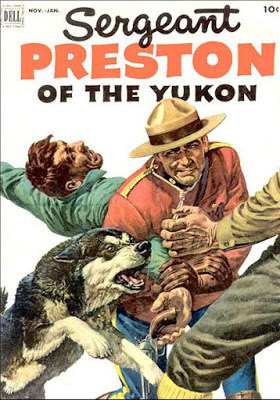 Airing on Thursday nights from 7:30-8pm the series ran for 78 episodes between September 29, 1955, and February 27, 1958, with Ashton, Colorado, passing for the Yukon territory.
Airing on Thursday nights from 7:30-8pm the series ran for 78 episodes between September 29, 1955, and February 27, 1958, with Ashton, Colorado, passing for the Yukon territory. 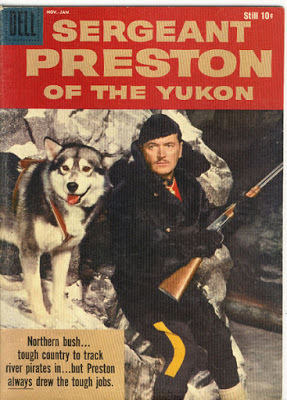 Directed most often by Eddie Dew or Earl Bellamy, the series set Preston and King on the trail of fur thieves, claim-jumpers, poachers, counterfeiters, smugglers and renegades—played by a host of B-movie vets. Because it had been filmed in color, the series continued in syndication long after other shows shot in black and white disappeared from the TV lineups.
Directed most often by Eddie Dew or Earl Bellamy, the series set Preston and King on the trail of fur thieves, claim-jumpers, poachers, counterfeiters, smugglers and renegades—played by a host of B-movie vets. Because it had been filmed in color, the series continued in syndication long after other shows shot in black and white disappeared from the TV lineups.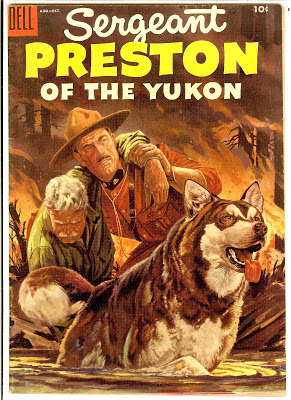 The show's original sponsor, Quaker Oats, promoted the show with the Klondike Big Inch Land Giveaway. Genuine deeds to one square inch of the Yukon Territory were inserted into Quaker's Puffed Wheat and Puffed Rice cereal boxes.
The show's original sponsor, Quaker Oats, promoted the show with the Klondike Big Inch Land Giveaway. Genuine deeds to one square inch of the Yukon Territory were inserted into Quaker's Puffed Wheat and Puffed Rice cereal boxes.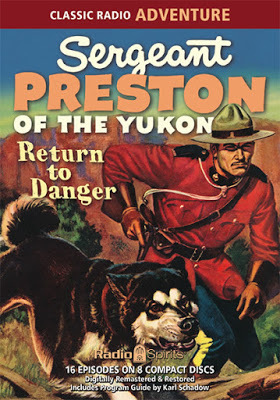 Originally known as Challenge of the Yukon, Sergeant Preston started life as a popular juvenile radio show on Detroit station WXYZ. Debuting in February 1938, the show was created by George W. Trendle’s Detroit radio show factory, which was also responsible for The Lone Ranger and The Green Hornet. The radio show ran for ten year with Preston being played by several actors, Jay Michael, Paul Sutton, and (briefly) Brace Beemer—radio’s Lone Ranger.
Originally known as Challenge of the Yukon, Sergeant Preston started life as a popular juvenile radio show on Detroit station WXYZ. Debuting in February 1938, the show was created by George W. Trendle’s Detroit radio show factory, which was also responsible for The Lone Ranger and The Green Hornet. The radio show ran for ten year with Preston being played by several actors, Jay Michael, Paul Sutton, and (briefly) Brace Beemer—radio’s Lone Ranger.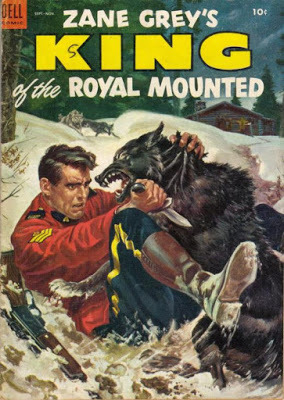 Classical music openings were popular at the time, and Sergeant Preston of the Yukon followed the formula using the Donna Diana Overture for its theme.
Classical music openings were popular at the time, and Sergeant Preston of the Yukon followed the formula using the Donna Diana Overture for its theme.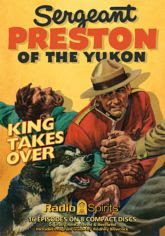 From 1951 to 1958 Dell Comics published 29 issues of Sergeant Preston of the Yukon. The first four issues appeared bi-annually, then quarterly, in the weekly catch-all series, Four Color Comics. Dell then gave the series its own book, starting the numbering designation with issue #5.
From 1951 to 1958 Dell Comics published 29 issues of Sergeant Preston of the Yukon. The first four issues appeared bi-annually, then quarterly, in the weekly catch-all series, Four Color Comics. Dell then gave the series its own book, starting the numbering designation with issue #5.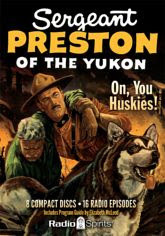 The comic's covers were paintings portraying drama or action, featuring Sergeant Preston and Yukon King—Preston's canine partner—in exciting scenes. When the Sergeant Preston of the Yukon television series debuted, the comic covers began to featured photos from the TV series.
The comic's covers were paintings portraying drama or action, featuring Sergeant Preston and Yukon King—Preston's canine partner—in exciting scenes. When the Sergeant Preston of the Yukon television series debuted, the comic covers began to featured photos from the TV series.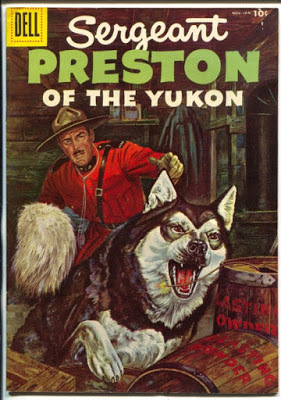 One source states all issues of the comics were written by Gaylord Du Bois (creator of Turok and the writer of Dell's King of the Royal Mounted comics), and illustrated by Alberto Giolitti (best known as the long-time illustrator of Turok). However, another source claims Don Sherwood adapted the show for Dell Comics with scripts by Stan Stunell.
One source states all issues of the comics were written by Gaylord Du Bois (creator of Turok and the writer of Dell's King of the Royal Mounted comics), and illustrated by Alberto Giolitti (best known as the long-time illustrator of Turok). However, another source claims Don Sherwood adapted the show for Dell Comics with scripts by Stan Stunell.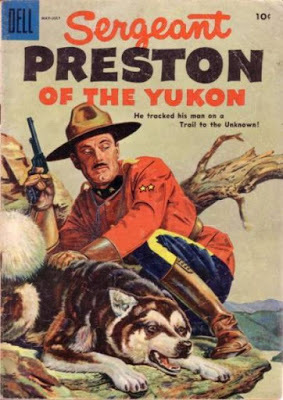 Richard Simmons portrayal of Preston was particularly sincere as Simmons believe it was the role he was born to play. He reveled in sitting tall in the saddle on his horse Rex, attired in his scarlet tunic and shiny black cavalry boots.
Richard Simmons portrayal of Preston was particularly sincere as Simmons believe it was the role he was born to play. He reveled in sitting tall in the saddle on his horse Rex, attired in his scarlet tunic and shiny black cavalry boots. 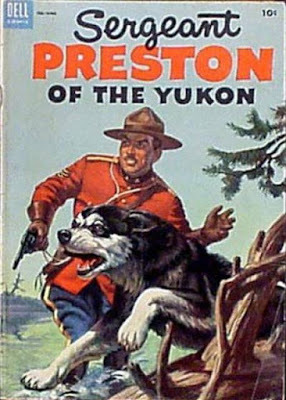 But Simmons was not simply a preening pretty boy. He threw himself into the part doing most of his own stunts and excelling in handling the sled dogs in many scenes, only letting his double step in when his director refused to continue filming until Simmons would stand down.
But Simmons was not simply a preening pretty boy. He threw himself into the part doing most of his own stunts and excelling in handling the sled dogs in many scenes, only letting his double step in when his director refused to continue filming until Simmons would stand down.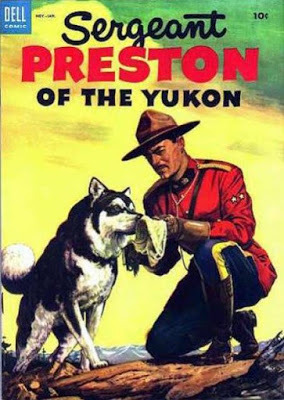 Each episode of the show would end with Preston hugging his dog and stating, “Well King, it looks like this case is closed.”
Each episode of the show would end with Preston hugging his dog and stating, “Well King, it looks like this case is closed.” 



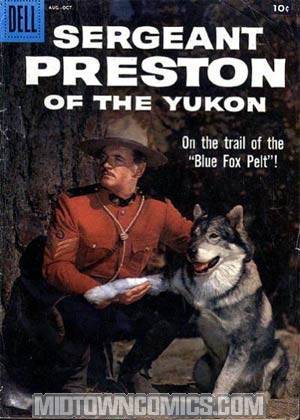

Published on October 06, 2019 22:31
October 5, 2019
THE NORTHWESTERN TALES OF ZANE GREY'S KING OF THE ROYAL MOUNTED
 THE NORTHWESTERN
THE NORTHWESTERNTALES OF
ZANE GREY'S KING OF THE ROYAL MOUNTEDThe comic series King of the Royal Mounted was first launched by the King Features Sydicate as a Sunday strip on February 17, 1935. A Daily strip followed begining on March 2, 1936.
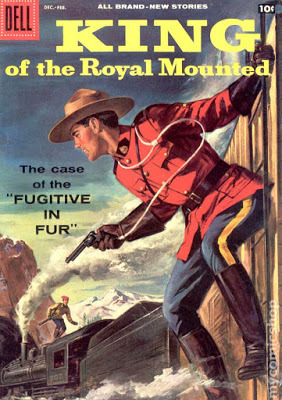 Over the course of the life of the strip, it was written by Stephen Slesinger, Romer Zane Grey (son of Zane Grey), and Gaylord Du Bois, and illustrated by Allen Dean, Charles Flanders, and Jim Gary.
Over the course of the life of the strip, it was written by Stephen Slesinger, Romer Zane Grey (son of Zane Grey), and Gaylord Du Bois, and illustrated by Allen Dean, Charles Flanders, and Jim Gary.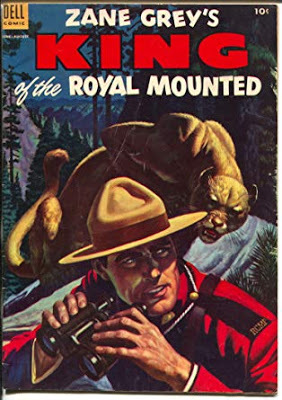 Much like the branding done today to capitalize on the popularity and name recognition of such authors as James Patterson, Tom Clancy, and Clive Cussler, the strip was marketed as Zane Grey's King of the Royal Mounted to cash in on the authorized byline of the well known Western writer.
Much like the branding done today to capitalize on the popularity and name recognition of such authors as James Patterson, Tom Clancy, and Clive Cussler, the strip was marketed as Zane Grey's King of the Royal Mounted to cash in on the authorized byline of the well known Western writer.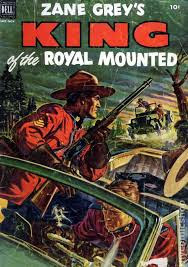 The protagonist of the strip, Dave King, is a Canadian Mountie who always gets his man. Over the course of the series, King is promoted from Corporal to Sergeant. Aside fro the Sunday and daily strips, which came to an end on February 14, 1954,
The protagonist of the strip, Dave King, is a Canadian Mountie who always gets his man. Over the course of the series, King is promoted from Corporal to Sergeant. Aside fro the Sunday and daily strips, which came to an end on February 14, 1954, 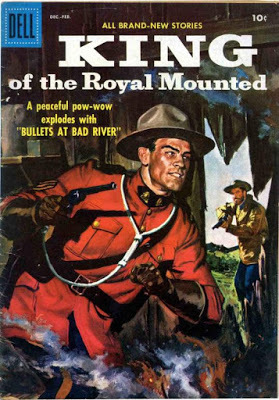 King also appeared in a long running series of comic books from King comics (1936–1949) and seven titles under the Four Color Comics banner. Dell the took over from Four Color Comics (starting their run with #8) for twenty issues between 1952 and 1958. The twenty Dell comics were written by Gaylord DuBois and illustrations in the style of Jim Gary.
King also appeared in a long running series of comic books from King comics (1936–1949) and seven titles under the Four Color Comics banner. Dell the took over from Four Color Comics (starting their run with #8) for twenty issues between 1952 and 1958. The twenty Dell comics were written by Gaylord DuBois and illustrations in the style of Jim Gary.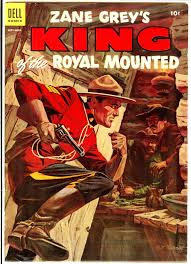 Big Little Books produced three tie-in titles–King of the Royal Mounted (1936); King of the Royal Mounted and the Northern Treasure (1937); and King of the Royal Mounted Gets His Man (1938).
Big Little Books produced three tie-in titles–King of the Royal Mounted (1936); King of the Royal Mounted and the Northern Treasure (1937); and King of the Royal Mounted Gets His Man (1938). 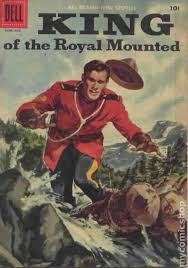 Better Little books then followed with two titles--King of the Royal Mounted and the Great Jewel Mystery (1939); and King of the Royal Mounted and the Long Arm of the Law (1942).
Better Little books then followed with two titles--King of the Royal Mounted and the Great Jewel Mystery (1939); and King of the Royal Mounted and the Long Arm of the Law (1942).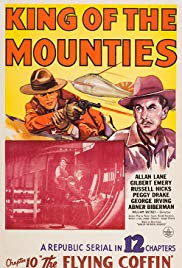 Several films and movie serials were produced–King of the Royal Mounted (1936) starring Robert Kent (retitled Romance of the Royal Mounted for its eventual video release).
Several films and movie serials were produced–King of the Royal Mounted (1936) starring Robert Kent (retitled Romance of the Royal Mounted for its eventual video release).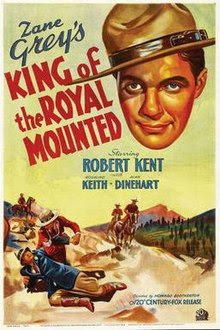 The similarly titled King of the Royal Mounted (1940), a twelve part serial starring Rocky Lane, which was later condensed into a feature film entitled The Yukon Patrol (1942); and King of the Mounties, another 12-part serial also starring Rocky Lane.
The similarly titled King of the Royal Mounted (1940), a twelve part serial starring Rocky Lane, which was later condensed into a feature film entitled The Yukon Patrol (1942); and King of the Mounties, another 12-part serial also starring Rocky Lane.There were a number of other ancillary tie-ins including Feature Books collection of the comic strips.

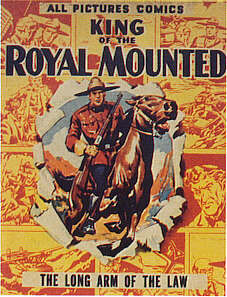


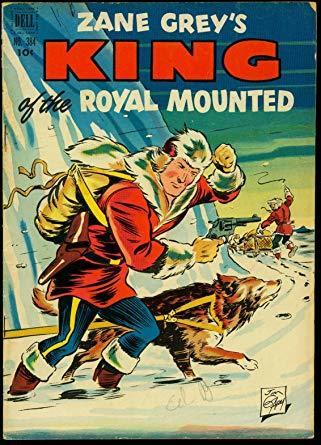


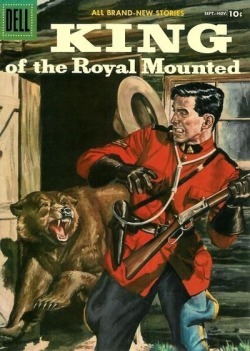





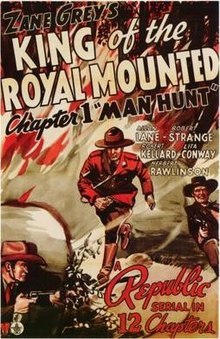
Published on October 05, 2019 21:16
October 1, 2019
WESTERN MOVIES—THE MAGNIFICENT SEVEN
 STILL MAGNIFICENTThe Magnificent Sevenhas topped my list of my favorite movies list since I saw it for the first time as a very impressionable ten-year-old. The film embodies every male trait I grew up wanting to emulate. Elmer Bernstein's score for The Magnificent Seven became the soundtrack to my childhood. The iconic music became instantly recognizable in the wider publics conscious in 1963, when it was used in the exceedingly masculineMarlboro Man tobacco advertising campaign. The real cowboy ads, featuring the dramatic theme, singlehandedly catapulted Marlboro cigarettes to the top of the tobacco industry.
STILL MAGNIFICENTThe Magnificent Sevenhas topped my list of my favorite movies list since I saw it for the first time as a very impressionable ten-year-old. The film embodies every male trait I grew up wanting to emulate. Elmer Bernstein's score for The Magnificent Seven became the soundtrack to my childhood. The iconic music became instantly recognizable in the wider publics conscious in 1963, when it was used in the exceedingly masculineMarlboro Man tobacco advertising campaign. The real cowboy ads, featuring the dramatic theme, singlehandedly catapulted Marlboro cigarettes to the top of the tobacco industry.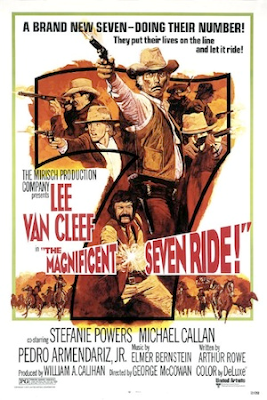 While the plot of The Magnificent Seven is based on Akira Kurosawa’s Japanese masterpiece, Seven Samurai, The Magnificent Seven itself has been copied again and again—sometimes almost scene by scene. Not only were there three Magnificent Seven sequels (Return of the Seven, 1966, Guns of the Magnificent Seven, 1969, and The Magnificent Seven Ride,1972), but also a Magnificent Seven TV series, which ran from 1998 to 2000—each episode a basic remake of the original movie, along with original Magnificent Seven actor Robert Vaughn making numerous guest appearances.
While the plot of The Magnificent Seven is based on Akira Kurosawa’s Japanese masterpiece, Seven Samurai, The Magnificent Seven itself has been copied again and again—sometimes almost scene by scene. Not only were there three Magnificent Seven sequels (Return of the Seven, 1966, Guns of the Magnificent Seven, 1969, and The Magnificent Seven Ride,1972), but also a Magnificent Seven TV series, which ran from 1998 to 2000—each episode a basic remake of the original movie, along with original Magnificent Seven actor Robert Vaughn making numerous guest appearances.There have also been any number of films, television shows, and books in other genres which have adapted the durable western plot to their own tropes and devices.
 The sci-fi film Battle Beyond the Stars (1980) featured seven space mercenaries (including Robert Vaughn again virtually reprising his role from The Magnificent Seven) hired to save a farming planet from alien marauders. The Seven Magnificent Gladiators (1983), starring Lou Ferrigno and Sybil Danning (Battle Beyond The Starsalso starred Danning), was a cheesy sword-and-sandal variation on the theme. The pilot for the 1980 television series The A-Team (which again featured Robert Vaughn in later seasons) was also a riff on The Magnificent Seven. Notable authors Stephen King – in his 2003 novel Wolves of the Calla—and Robert B. Parker—in his 2001 Spenser novel Potshot—also put the always adaptable Magnificent Seven plot to good use.
The sci-fi film Battle Beyond the Stars (1980) featured seven space mercenaries (including Robert Vaughn again virtually reprising his role from The Magnificent Seven) hired to save a farming planet from alien marauders. The Seven Magnificent Gladiators (1983), starring Lou Ferrigno and Sybil Danning (Battle Beyond The Starsalso starred Danning), was a cheesy sword-and-sandal variation on the theme. The pilot for the 1980 television series The A-Team (which again featured Robert Vaughn in later seasons) was also a riff on The Magnificent Seven. Notable authors Stephen King – in his 2003 novel Wolves of the Calla—and Robert B. Parker—in his 2001 Spenser novel Potshot—also put the always adaptable Magnificent Seven plot to good use.But here is an adaptation of Magnificent Seven I didn't know about until recently. In the late ‘70s, Marvel Comics scribe Roy Thomas wrote a 4-issue story arc Star Wars story (issue numbers 7, 8, 9 & 10 from the original Marvel series) based on the Seven Samurai/The Magnificent Seven plot and illustrated by Howard Chaykin.
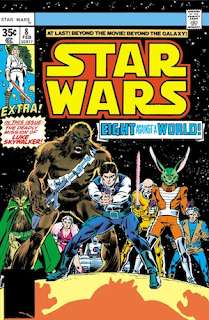 In the comic sequence, The Star-Hoppers of Aduba-3 are a group of misfits organized in true Magnificent Seven style by Han Solo and Chewbacca to protect a simple farming village from a band of marauders called the Cloud Riders.
In the comic sequence, The Star-Hoppers of Aduba-3 are a group of misfits organized in true Magnificent Seven style by Han Solo and Chewbacca to protect a simple farming village from a band of marauders called the Cloud Riders. Although the Star Hoppers (also known as the Amazing Eight) only remained together for one mission, three of the surviving member—Jaxxon, Amaiza Foxtrain and Jimm Doshun—later reunited against the threat of bounty hunter Beilert Valance who mistakenly believed Jimm to be Luke Skywalker.
"Couple of years ago, it was, back on Aduba III. I got hired by some ugly mug named Han Solo. Joined up with seven other mercs, each one more hard-scrabble than the next. We went up against the Cloud Riders, a bunch of sorry swoop jockeys from the Outer Rim. Chased em off good and proper, with the help of a big behemothy type thing." ~ Jaxxon, member of the Star-Hoppers of Aduba-3.
In sequence, the comic issues include:
STAR WARS 7: NEW PLANETS, NEW PERILS!
After bidding farewell to their Rebel friends, Han Solo and Chewbacca set out to return to Tatooine to pay off their debt to Jabba the Hutt. En route, they are hijacked by space pirate Crimson Jack and his gang of thugs. The pirates take the reward money given to Han and Chewbacca by the Rebel Alliance for rescuing Princess Leia Organa, but spare their lives.
If you remember the Boot Hill scene from The Magnificent Seven (Steve McQueen upstaging a pissed off Yule Brenner by repeatedly shaking shotgun shells while Brenner is saying his lines) you’ll know exactly what the next plot development will be…
Forced to lay low because they can't pay Jabba, the two seek refuge on the planet Aduba-3. There they are hired by a priest of the Sacred Way to bury a recently deceased borg. Although they meet some resistance from the locals who object to having a borg buried in their traditional mound, they do eventually find their way to the burial site.
McQueen as Vin: “You elected?”
Brenner as Chris: “Nah. I got nominated real good.”
After completing the task, the two smugglers are relaxing in a local cantina where they are presented with a much deadlier one.
Is all of this starting to sound familiar?
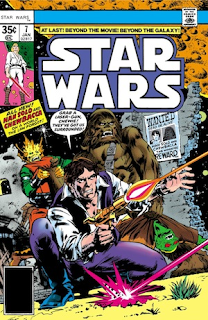 STAR WARS 8: EIGHT FOR ADUBA-3
STAR WARS 8: EIGHT FOR ADUBA-3Han Solo and Chewbacca are hired by Ramiz, a moisture farmer on Aduba-3, to protect his village from a band of local thugs known as the Cloud Riders led by Serji-X Arrogantus.
You are allowed to immediately think of Eli Wallach preparing to chew scenery from under a wide sombrero and through a scraggly gunfighter’s mustache…
Han and Chewbacca hire six misfit spacers to help them with the task, including Don-Wan Kihotay, an old man who thinks he is a Jedi Knight, and Jaxxon, a rabbit-like creature with a mean disposition.
Sounds like James Coburn (as Britt) and Charles Bronson (as Bernardo)…
Serji-X tries to convince Han to forget about his mission to protect the peasants and even offers him compensation, but Han declines.
Coburn as Britt faced with the same choice: “Nobody throws me my own guns and says run.”
Meanwhile, on Yavin 4, Luke Skywalker, C-3PO and R2-D2 leave in a scout ship to search for a location for the new Rebel Alliance base (yawn).
STAR WARS 9: SHOWDOWN ON A WASTELAND WORLD!
Han Solo, Chewbacca, and the Star-Hoppers arrive at Ramiz' village Onacra, only to find it under attack by flying High-Hounds. They repel the beasts, saving the life of a young girl named Merri to the great relief of her father Oncho, the village spokesman. But their relief is short-lived as Serji-X Arrogantus and his gang attack. The Star-Hoppers valiantly defend the village from the attack, but not without cost as FE-9Q is destroyed in the fray.
Wallach as Calvera: “I should have guessed. When my men didn't come back I should have guessed. How many of you did they hire?”
Brenner as Chris: “Enough.”
Wallach as Calvera: “Generosity...that was my first mistake. I leave these people a little bit extra, and then they hire these men to make trouble. It shows you, sooner or later, you must answer for every good deed.”
McQueen as Vin: “We deal in lead, friend.”
However, Merri's grandfather the Old One, a shaman, dismisses the hired spacers' help and summons a large, mythical reptilian monster called the Behemoth from the World Below to handle the invading Cloud-Riders. Meanwhile, Luke Skywalker informs Leia Organa he has found a new location for the Rebel Alliance base in the Drexel system, but the transmission suddenly ends, and a worried Leia sets out to find Luke.
STAR WARS 10: BEHEMOTH FROM THE WORLD BELOW
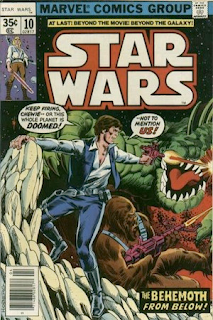 The Old One has summoned the Behemoth, a giant reptilian monster, to defend the village Onacra from the villainous Cloud-Riders. Serji-X Arrogantus, the leader of the Cloud-Riders, realizes he and his men have no chance against the beast, and he also realizes that the giant is being controlled by the old shaman. He attacks the Old One but the Behemoth reacts in time to kill Serji-X, however the old shaman is killed as well causing the monster to run amok.
The Old One has summoned the Behemoth, a giant reptilian monster, to defend the village Onacra from the villainous Cloud-Riders. Serji-X Arrogantus, the leader of the Cloud-Riders, realizes he and his men have no chance against the beast, and he also realizes that the giant is being controlled by the old shaman. He attacks the Old One but the Behemoth reacts in time to kill Serji-X, however the old shaman is killed as well causing the monster to run amok. With the rest of the Star-Hoppers running for cover, would-be Jedi Knight Don-Wan Kihotay tries to stop the great beast on his own. Hedji tries to help him, but is killed by the monster without much trouble.
A dying Brad Dexter (the only one of the Seven whose name nobody can remember) as Harry: “Tell me there was gold, Chris. Don’t let me die thinking I came back for nothing.
Brenner as Chris telling a big fib: “Yes, Harry. There’s gold.”
Dexter as Harry: [Dying words] “Well, I'll be damned.”
Brenner as Chris: “Maybe you won't be.”
Then Han Solo rushes to help Kihotay, and uses the man's lightsaber to destroy the Behemoth.
Brenner as Chris: “The old man was right. Only the farmers won. We lost. We always lose.”
Meanwhile, Leia Organa searches the Drexel system for Luke Skywalker who hasn't been heard from since his last transmission was interrupted.
 THE MAGNIFICENT SEVENNo matter how many times I see it (and irritate my spouse by saying the dialogue along with the actors), The Magnificent Seven still stirs my blood. The dialogue. The action. The iconic actors. No matter how it’s delivered, for me, it never grows old…
THE MAGNIFICENT SEVENNo matter how many times I see it (and irritate my spouse by saying the dialogue along with the actors), The Magnificent Seven still stirs my blood. The dialogue. The action. The iconic actors. No matter how it’s delivered, for me, it never grows old…
Published on October 01, 2019 17:45
BOOK DRESSES
 BOOK DRESSESI'm hardly a fashion maven, but these dresses made from book patterns are so stunning I wanted to capture them here as creative inspiration.
BOOK DRESSESI'm hardly a fashion maven, but these dresses made from book patterns are so stunning I wanted to capture them here as creative inspiration.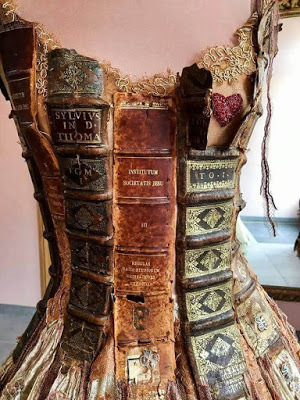 Sylvie Facon is a French creator and fashion designer who created and sewed these dresses from fabrics she created. The designs have so much attention to detail, they'd steal any catwalk.
Sylvie Facon is a French creator and fashion designer who created and sewed these dresses from fabrics she created. The designs have so much attention to detail, they'd steal any catwalk.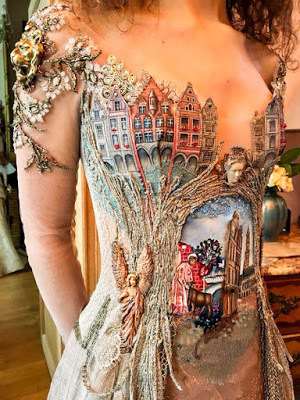 The designer gowns crafted by Facon vary from very romantic lacework to high fashion dresses made from book spines, highlighting the versatility of the designer's skills. Craftsmanship without a fantasy could not conceive such dreamy and one of a kind garments, but in Sylvie’s case, there’s no lack of creativity in her work.
The designer gowns crafted by Facon vary from very romantic lacework to high fashion dresses made from book spines, highlighting the versatility of the designer's skills. Craftsmanship without a fantasy could not conceive such dreamy and one of a kind garments, but in Sylvie’s case, there’s no lack of creativity in her work.









Published on October 01, 2019 05:52
THE RAVISHING IDIOT
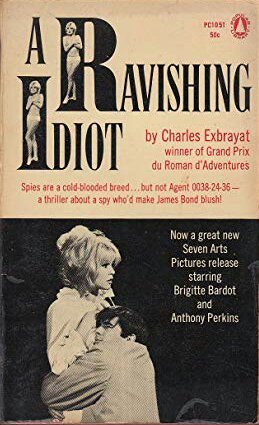 THE RAVISHING IDIOTIt's spy-tacular! Here comes Brigitte Bardot as the wildest secret agent who ever dropped the Iron Curtain on her foot! She's got concealed weapons Mata Hari never dreamed of!
THE RAVISHING IDIOTIt's spy-tacular! Here comes Brigitte Bardot as the wildest secret agent who ever dropped the Iron Curtain on her foot! She's got concealed weapons Mata Hari never dreamed of! 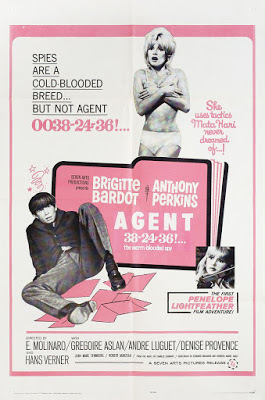 Directed by Édouard Molinaro, with music composed by Michel Legrand, 1964's The Ravishing Idiot (Une Ravissante Idiote) is a French spysploitation film starring Brigitte Bardot as the beautiful, but simple-minded Penelope Lightfeather. Molinaro would go on to direct a series of well regarded noir films in the classic French style, a genre far more suited to his somber strengths than this attempt at light, frothy comedy.
Directed by Édouard Molinaro, with music composed by Michel Legrand, 1964's The Ravishing Idiot (Une Ravissante Idiote) is a French spysploitation film starring Brigitte Bardot as the beautiful, but simple-minded Penelope Lightfeather. Molinaro would go on to direct a series of well regarded noir films in the classic French style, a genre far more suited to his somber strengths than this attempt at light, frothy comedy.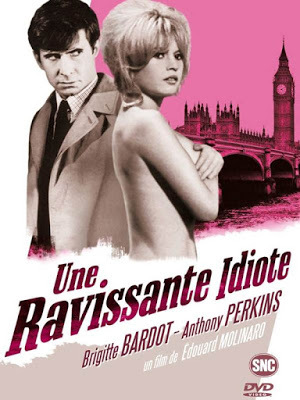 The bumbling but charming Harry Compton (Anthony Perkins) has lost his position in London banking. Desperate for another job, he foolishly agrees to become a Soviet agent. His first mission is to steal the top secret Avalanche file, filled with British military orders, from Sir Dumfrey, the head of British Intelligence. Employed by Sir Dumfrey as his wife's private dressmaker, Penelope's innocence makes her a prime target for Harry's not so devious machinations as he attempts to carry out his mission.
The bumbling but charming Harry Compton (Anthony Perkins) has lost his position in London banking. Desperate for another job, he foolishly agrees to become a Soviet agent. His first mission is to steal the top secret Avalanche file, filled with British military orders, from Sir Dumfrey, the head of British Intelligence. Employed by Sir Dumfrey as his wife's private dressmaker, Penelope's innocence makes her a prime target for Harry's not so devious machinations as he attempts to carry out his mission.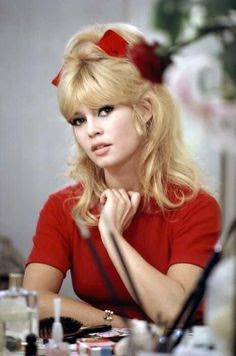 With the best of innocent intentions, the naive Penny is enmeshed in Harry's plans, but one slapstick blunder leads to another, eventually alerting MI6 to their activities. Hilarity ensues...Well not really. The film is a schizophrenic mashup, half French bedroom farce and half ill conceived James Bond spoof, with a script even more dimwitted than its charming leads.
With the best of innocent intentions, the naive Penny is enmeshed in Harry's plans, but one slapstick blunder leads to another, eventually alerting MI6 to their activities. Hilarity ensues...Well not really. The film is a schizophrenic mashup, half French bedroom farce and half ill conceived James Bond spoof, with a script even more dimwitted than its charming leads.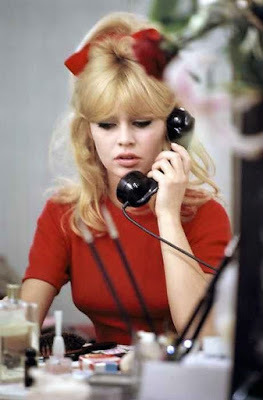 The Ravishing Idiot started life as a novel by Charles Exbrayat, which won the prestigious Grand Prix du Roman d'Adventures French literary award. The tag line on the paperback movie tie-in edition published by Popular Library states, Spies are a cold breed...but not Agent 0038-24-36—A thriller about a spy who'd make James Bond blush. Hidden in this unsubtle promo line is a spoiler giving away the book and film's final twist.
The Ravishing Idiot started life as a novel by Charles Exbrayat, which won the prestigious Grand Prix du Roman d'Adventures French literary award. The tag line on the paperback movie tie-in edition published by Popular Library states, Spies are a cold breed...but not Agent 0038-24-36—A thriller about a spy who'd make James Bond blush. Hidden in this unsubtle promo line is a spoiler giving away the book and film's final twist.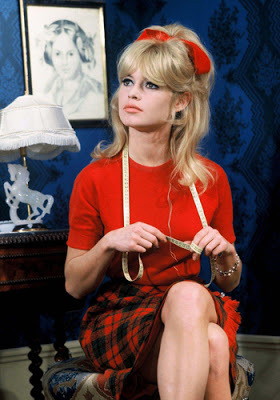 A SPOILER ALERT is probably not necessary as nobody is going to rush out to find a badly dubbed VHS copy of The Ravishing Idiot or read the now obscure book. However, consider yourself warned...The secret plans, of course, are fakes designed to be stolen in order to mislead the Soviet spy hierarchy, but because Bardot is so suited to her ditzy role, it does come as a surprise in the last few minutes of the film when se is revealed as an actually competent British agent.
A SPOILER ALERT is probably not necessary as nobody is going to rush out to find a badly dubbed VHS copy of The Ravishing Idiot or read the now obscure book. However, consider yourself warned...The secret plans, of course, are fakes designed to be stolen in order to mislead the Soviet spy hierarchy, but because Bardot is so suited to her ditzy role, it does come as a surprise in the last few minutes of the film when se is revealed as an actually competent British agent.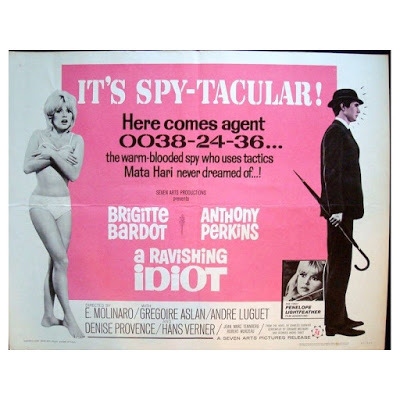 Overall, The Ravishing Idiot is a poorly conceived, poorly executed exercise in exploitive film making, worth watching only for the presence of Bardot in the ripe prime of her womanhood.
Overall, The Ravishing Idiot is a poorly conceived, poorly executed exercise in exploitive film making, worth watching only for the presence of Bardot in the ripe prime of her womanhood.
Published on October 01, 2019 01:20



